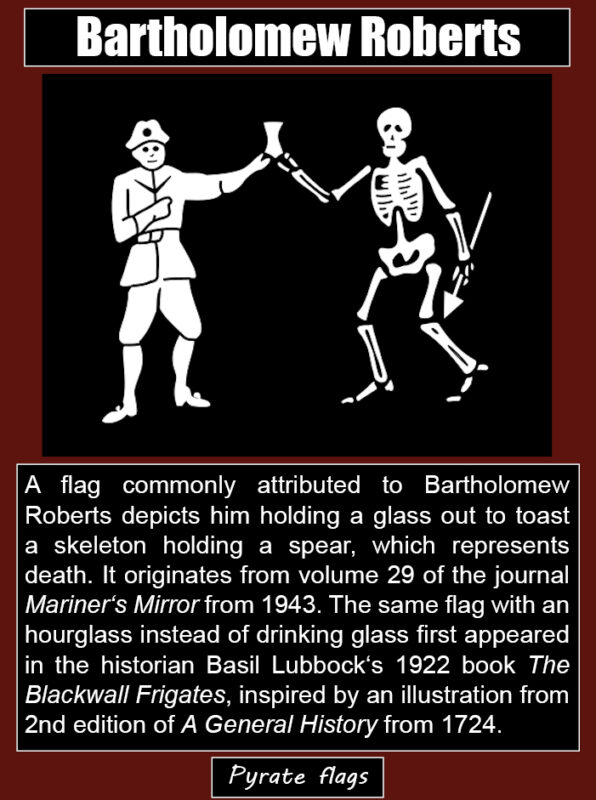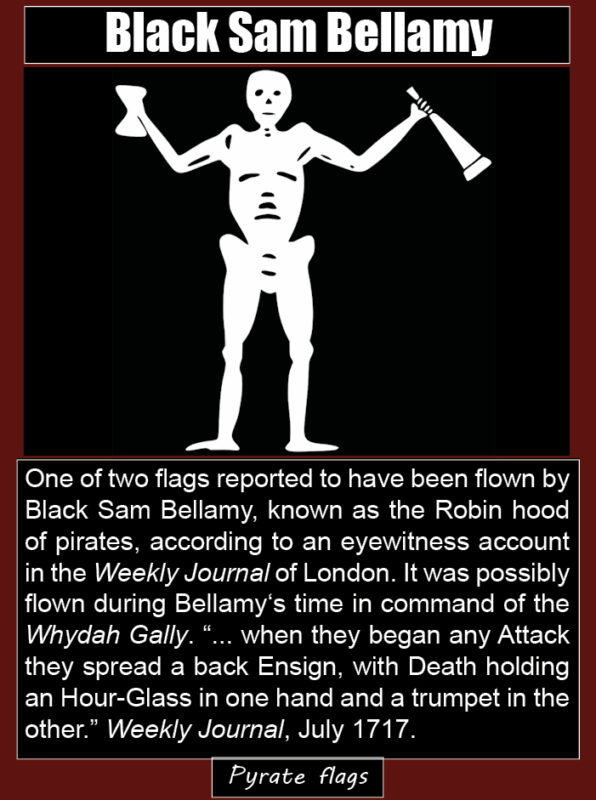

This flag depicts Bartholomew Roberts holding a sword while standing on two skulls: under one is written ABH, under the other AMH, standing for a Barbadian’s Head and A Martinican’s head respectively. Later he is depicted as holding a flaming sword. It is said to portray Robert’s animosity towards those two islands after their governors attempted to capture him. The only evidence for this flag is A General History of the Pyrates, depicted with the cross of St. George in top right corner in the first edition. ‘… a Man pourtrayed [sic] in it, with a flaming Sword in his hand, and standing on two Skulls, subscribed A.B.H. And A.M.H.’

One of two flags reported to have been flown by Black Sam Bellamy, known as the Robin hood of pirates, according to an eyewitness account in the Weekly Journal of London. It was possibly flown during Bellamy’s time in command of the Whydah Gally. “… when they began any Attack they spread a back Ensign, with Death holding an Hour-Glass in one hand and a trumpet in the other.” Weekly Journal, July 1717

A request to be quiet or call for silence. On sailing the boatswain’s pipe was used as a tool to communicate with the ship’s crew. One such signal was ‘piping down the hammocks’ which was the signal to go below decks and retire for the night. When an officer wanted a sailor to be dismissed below he would have him ‘piped down’. Possibly also used to call sailors to silence so they could hear the commands of the officers.